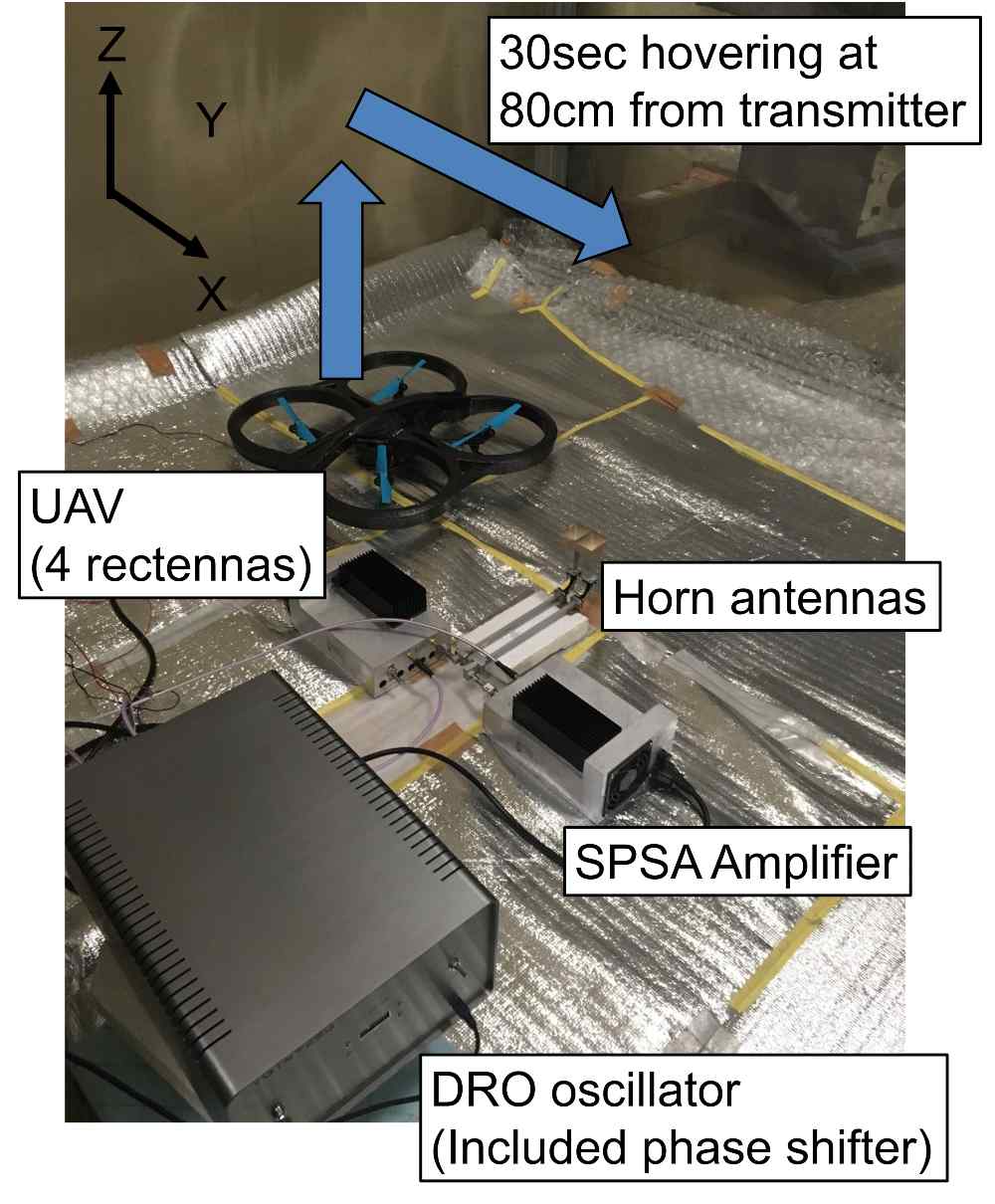Sending a rocket into space typically requires about 90% of the rocket's initial weight to be fuel.
Researchers from the University of Tsukuba want to lighten the load by exploring a different kind of launch option: a high-power beam of microwave radiation.
In a study published this month in the Journal of Spacecraft and Rockets, the team used a high-frequency, 28-GHz microwave to send a free-flying drone into the air for 30 seconds. The 0.4-kilogram aircraft reached a height of 0.8 meters above the source of the microwave beam.
The engineers, led by lead author Prof. Kohei Shimamura, used a sophisticated beam tracker to ensure that the drone received as much power as possible.
"To further increase the transmission efficiency, we carefully tuned the phase of the microwaves using an analog phase shifter that was synchronized with GPS units," said Shimamura in a news release this month .
The flyer reached an overall power transmission efficiency of 0.43% — an improvement from the researchers' previous study, which demonstrated 0.1 efficiency for a fixed-position drone. To arrive at the 0.43% figure, Shimamura and the team calculated the efficiencies of the power transfer through the beam (4%), the capture of microwaves by the drone (30%), and the conversion of microwaves to electricity for propulsion (40%).
Although microwave-powered rocket propulsion is still in its early stages, it could someday become a superior way to launch rockets into orbit given the high onboard-fuel demands of conventional propulsion techniques, according to the lead author.
"These results show that more work is needed to improve the transmission efficiency and thoroughly evaluate the feasibility of this propulsion approach for aircraft, spacecraft, and rockets," said Shimamura.
In a short Q&A with Tech Briefs below, Shimamura reveals how soon microwave power could take off.
Tech Briefs: How do you direct the microwave power? What technology is used to direct the microwave power?
Prof. Shimamura: To control the direction of the microwaves, a phase comparator is used. The phase comparator adjusts the phase so that the waves generated from multiple microwave sources propagate in the same phase to avoid interference. By controlling the phase comparator and the position of the drone in real time, the beam can be pointed at the drone.
Tech Briefs: Take me through the day of the test with the drone. How much power was generated, and how well did it direct the drone? Were you happy with the results?
Prof. Shimamura: The DC power obtained on the drone is a few 10mW. We did not expect to get that much power due to the payload of the drone and the number of rectifiers. The goal of this project is to be able to transmit microwave continuously. In a future study, I would like to run the drone using only microwaves. On the other hand, this will require more microwave sources, larger drones, larger fields, and many other preparations.

Tech Briefs: Why is a microwave method a superior way to launch rockets into orbit?
Prof. Shimamura: First of all, compared to a chemical rocket, the payload of a rocket is very different depending on whether the fuel is in or out of the rocket; in a chemical rocket, the fuel accounts for more than 90% of the total mass of the rocket. In chemical rockets, fuel accounts for more than 90% of the total mass of the rocket, while in microwave and laser rockets, the fuel on board is essentially zero. Therefore, the rocket becomes a simple structure, and the cost is said to be 1/100.
Also, when comparing microwave and laser, microwave is cheaper in terms of source generator, and microwave is said to be closer to realizing a rocket launch.
Tech Briefs: What needs to happen for this method to be used for space launches? Do you envision this method being used for space launches someday?
Prof. Shimamura: First, we need to improve the technology of the unfinished rocket system. In particular, there has been very little research on tracking technology, and we need technology for stable microwave pointing at an altitude of 100 km.
It is also important to align the phase of microwave emitted from multiple beam sources. We will start with a few meters and gradually increase the altitude, aiming to lift heavy objects from light ones to small satellites.
What do you think? Share your questions and comments below.
Transcript
No transcript is available for this video.


